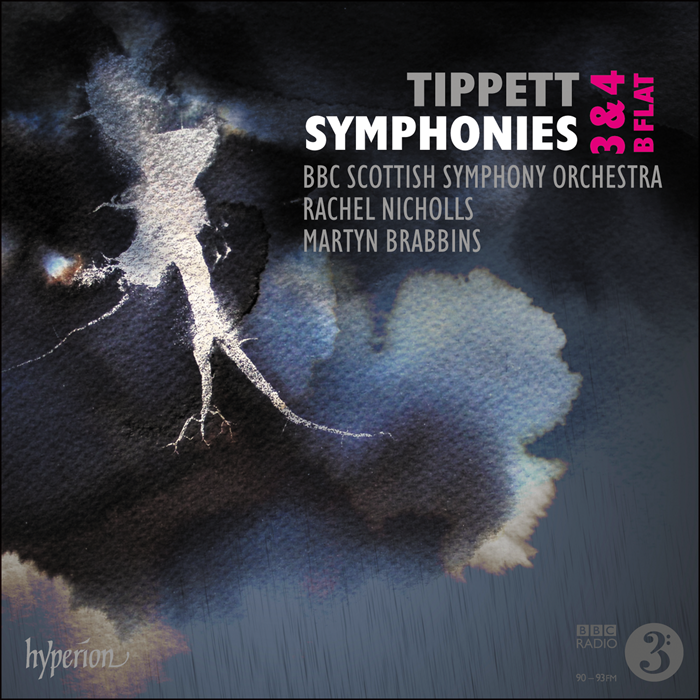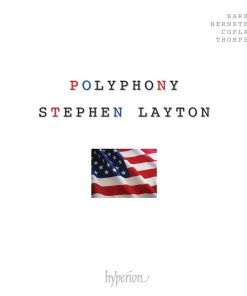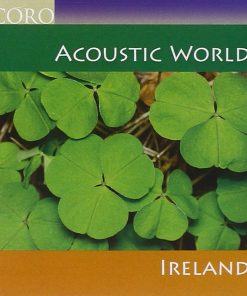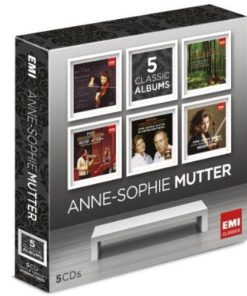Tippett: Symphonies Nos. 3, 4 & B Flat – BBC Scottish Symphony Orchestra, Martyn Brabbins (2 CDs) Hyperion
$ 20,99 $ 12,59
The first opportunity to experience Tippett’s unique symphonic voice stretching across nearly half a century, from the early B flat symphony (here receiving its first recording) to the extraordinary ‘birth-to-death’ span encompassed by No 4.

Symphony No 3[57’45]Rachel Nicholls (soprano)
CD1
1
Part 1a: Allegro non troppo e pesante (Arrest) – Allegro molto e con grande energia (Movement) –[13’06]2
Part 1b: Lento[15’32]3
Part 2a: Allegro molto –[6’42]4
Part 2b: Slow blues: Andante – As I drew nurture from my mother’s breast[3’28]Mark O’Keeffe (flugelhorn)
5
Part 2c: Fast blues: Allegro O, I’ll go walking[2’51]6
Part 2d: Slow blues: Largo – I found the man grown to a dwarf[5’03]7
Part 2e: Pochissimo meno mosso They sang that when she waved her wings[11’03]Symphony No 4[35’39]
CD2
8
Part 1, Introduction and exposition: Tempo 1: slow crotchet pulse (quaver = c100)[4’02]9
Part 2 Figure 21, First development: Tempo 1[4’41]10
Part 3 Figure 52, Slow movement: Tempo 1[8’42]11
Part 4 Figure 78, Second development: Tempo 2: steady crotchet pulse (crotchet = c60)[3’19]12
Part 5 Figure 100, Scherzo: Tempo 3: fast crotchet pulse (crotchet = c90)[4’19]13
Part 6 Figure 139, Third development: Tempo 1 –[5’02]14
Part 7 Figure 160, Recapitulation and coda: Tempo 1[5’34]Symphony in B flat[27’09]15
Lento – Allegro con fuoco[10’43]16
Adagio – Poco più andante – Adagio[7’09]17
Allegro e cantabile[9’17]
Fast Shipping and Professional Packing
Due to our longstanding partnership with UPS FedEx DHL and other leading international carriers, we are able to provide a range of shipping options. Our warehouse staff are highly trained to pack your goods exactly according to the specifications that we supply. Your goods will undergo a thorough examination and will be safely packaged prior to being sent out. Everyday we deliver hundreds of packages to our customers from all over the world. This is an indication of our dedication to being the largest online retailer worldwide. Warehouses and distribution centers can be located in Europe as well as the USA.
Orders with more than 1 item are assigned processing periods for each item.
Before shipment, all ordered products will be thoroughly inspected. Today, most orders will be shipped within 48 hours. The estimated delivery time is between 3-7 days.
Returns
The stock is constantly changing. It's not entirely managed by us since we are involved with multiple parties such as the factory and our storage. The actual stock can fluctuate at any time. Please understand it may happen that your order will be out of stock when the order is placed.
Our policy is valid for 30 days. If you haven't received your product within 30 days, we're not able to issue either a return or exchange.
You are able to return a product if it is unused and in the same condition when you received it. It must also still remain in the original packaging.
Related products
MUSIC CD
MUSIC CD
MUSIC CD























































